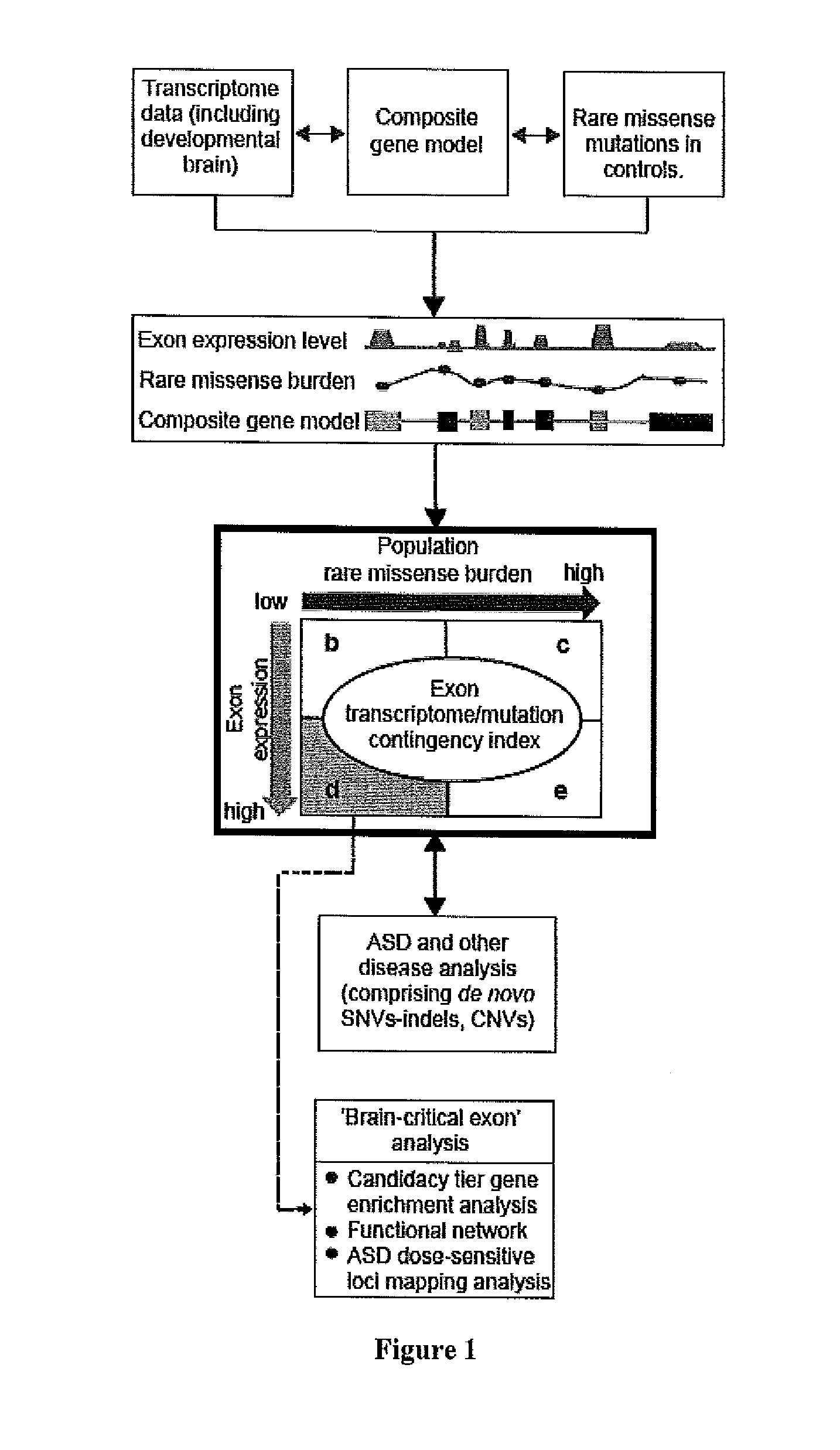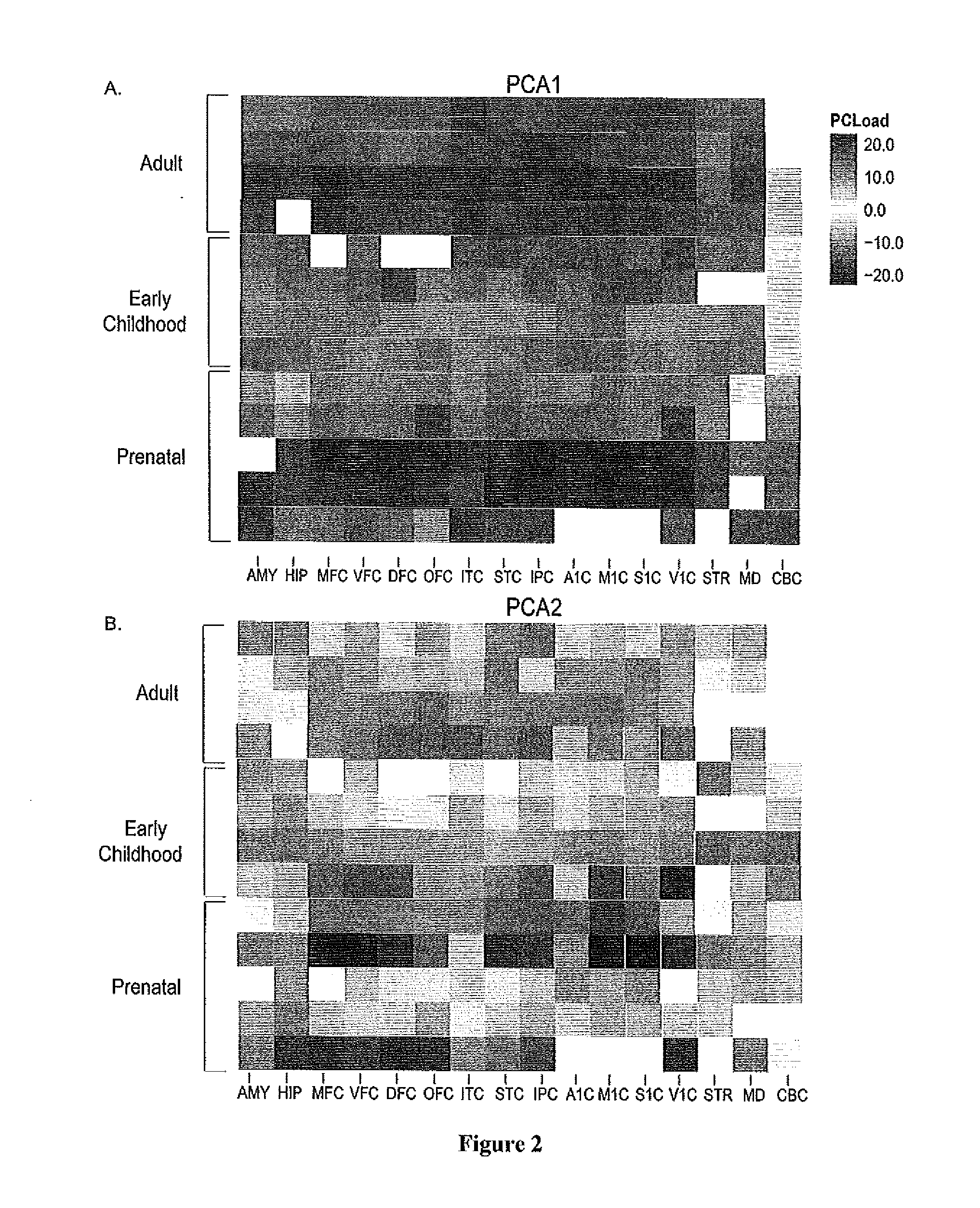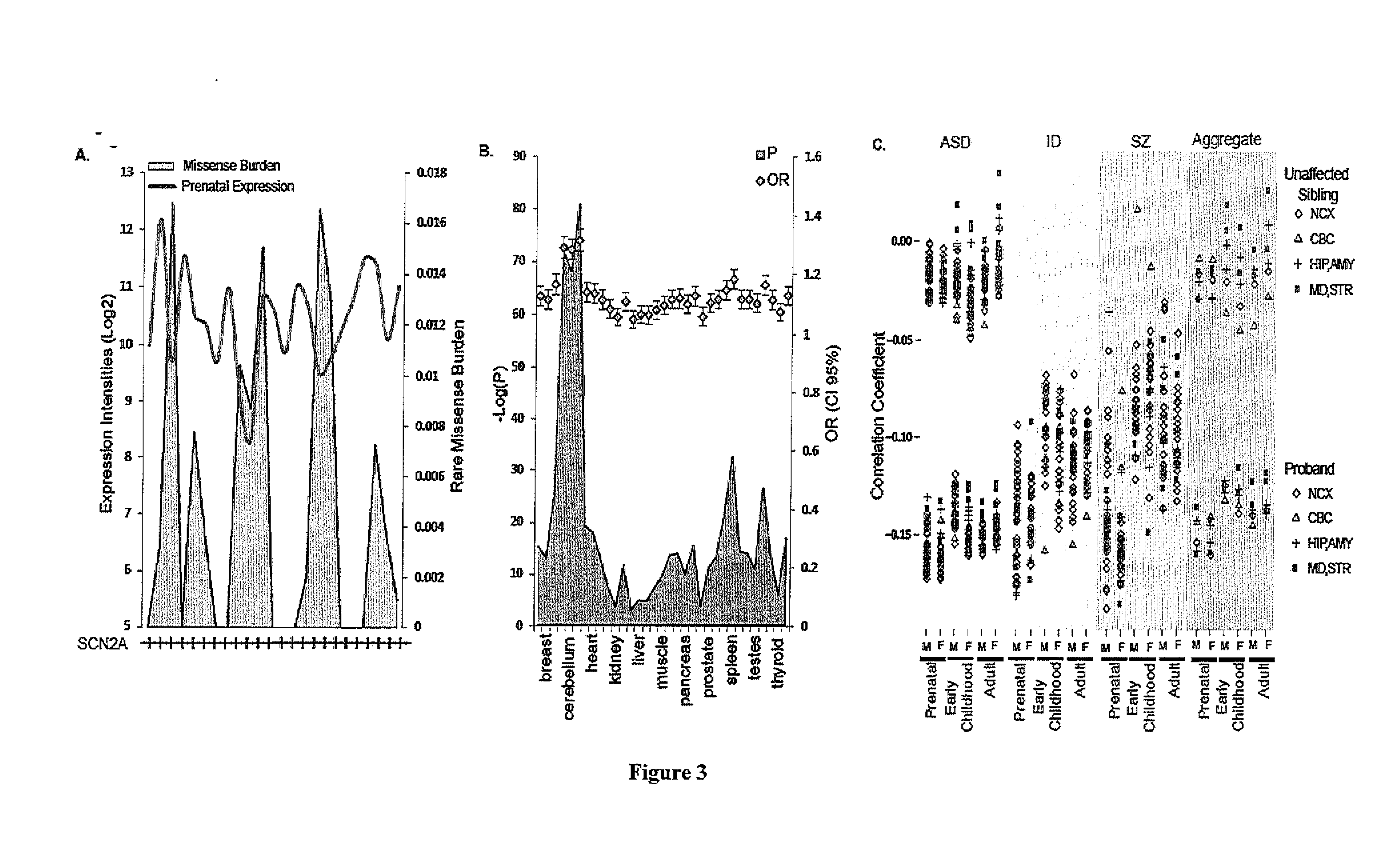Method of determining disease causality of genome mutations
- Summary
- Abstract
- Description
- Claims
- Application Information
AI Technical Summary
Benefits of technology
Problems solved by technology
Method used
Image
Examples
example 1
Materials and Methods
Burden of Rare Missense Mutations
[0072]Data from the Exome Sequence Project (ESP) (http: / / evs.gs.washington.edu / EVS / , downloaded February 2013) initiated by US National Health Heart, Lung and Blood Institute (NHLBI) was used to calculate the burden of rare missense mutations in human populations. The data was processed by computer to identify variants according to steps 104 and 106 of FIG. 30. Variants were obtained from 6,503 exomes (2,203 African Americans (AA) and 4,300 European Americans (EA)); each exome had a median sequence coverage of at least 100× (Fu et al. Nature 493, 216-220 (2013); published online EpubJan 10 (10.1038 / nature11690). The composite RefSeq gene annotation (which includes all exons from annotated isoforms) was used for the analysis and after excluding genes with no variant calls (3,267 genes), a total of 20,417 genes (including protein coding and pseudo genes) remained for analysis. The number of variants that passed quality control was ...
example 2
[0114]Copy number variants (CNVs) are associated with numerous neurocognitive disorders. In a diagnostic setting, clinical microarray commonly uses ISCA 4×180K arrays to detect such chromosomal abnormalities. The variants are classified primarily into three distinct groups: “pathogenic”, “variant of unknown significance (VOUS)”, or “benign / control”. However, “pathogenic” events are typically large, and the underlying causative genes are unclear. The genotype-phenotype correlation is also complicated for VOUS variants due to lack of additional support to interpret the variant.
[0115]Using 7,106 samples from individuals with developmental delay (obtained from the Hospital for Sick Children, Toronto, molecular diagnostic laboratory), the samples were genotyped using the International Standards for Cytogenomic Arrays (ISCA). CNVs were primarily classified into the three groups mentioned above. 7,646 control CNVs detected from other high-resolution microarray experiments were also utilize...
example 3
Clinical Microarray Datasets
[0117]Clinical microarray (CMA) data was obtained from two independent sites, The Hospital for Sick Children (SK) and Credit Valley Hospital (CVH). A total of 7,106 and 3,513 cases CMA data were obtained, respectively, that went through confirmed diagnosis for developmental delay. ISCA 180K comparative genomic hybridization array was used to detect large CNVs by applying a circular binary segmentation algorithm. For reference, a pool of 10 samples was used to compare individual probe intensities. The clinical annotation for each sample variant was conducted by the clinical geneticist in each site.
[0118]DNA extracted from peripheral blood was used to perform comparative genomic hybridization array (aCGH) analysis on a custom designed 4×180K oligonucleotide microarray platform (Oxford Gene Technology (OGT), Oxford, UK). Microarray experiments were performed according to the manufacturer's instructions. Briefly, DNA from the proband and pooled same-sex refer...
PUM
| Property | Measurement | Unit |
|---|---|---|
| Length | aaaaa | aaaaa |
| Time | aaaaa | aaaaa |
| Digital information | aaaaa | aaaaa |
Abstract
Description
Claims
Application Information
 Login to View More
Login to View More - R&D
- Intellectual Property
- Life Sciences
- Materials
- Tech Scout
- Unparalleled Data Quality
- Higher Quality Content
- 60% Fewer Hallucinations
Browse by: Latest US Patents, China's latest patents, Technical Efficacy Thesaurus, Application Domain, Technology Topic, Popular Technical Reports.
© 2025 PatSnap. All rights reserved.Legal|Privacy policy|Modern Slavery Act Transparency Statement|Sitemap|About US| Contact US: help@patsnap.com



